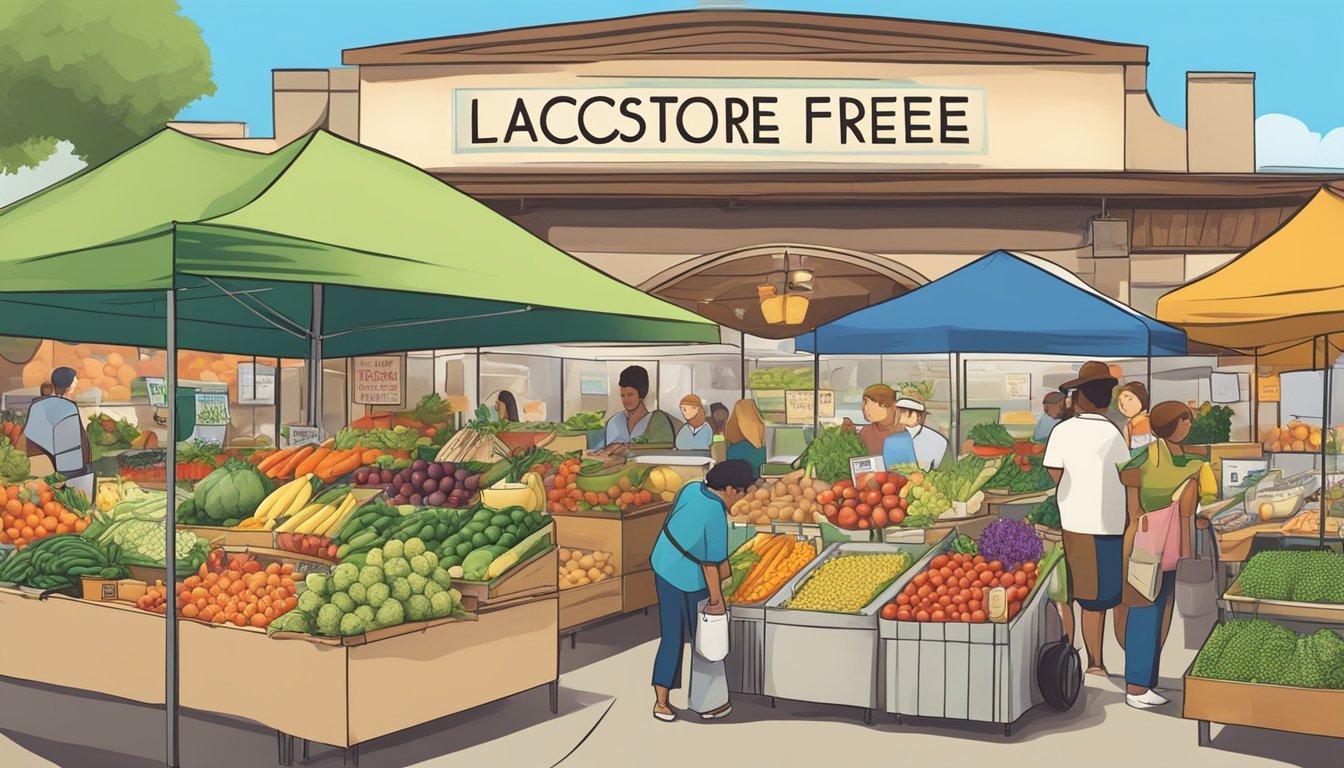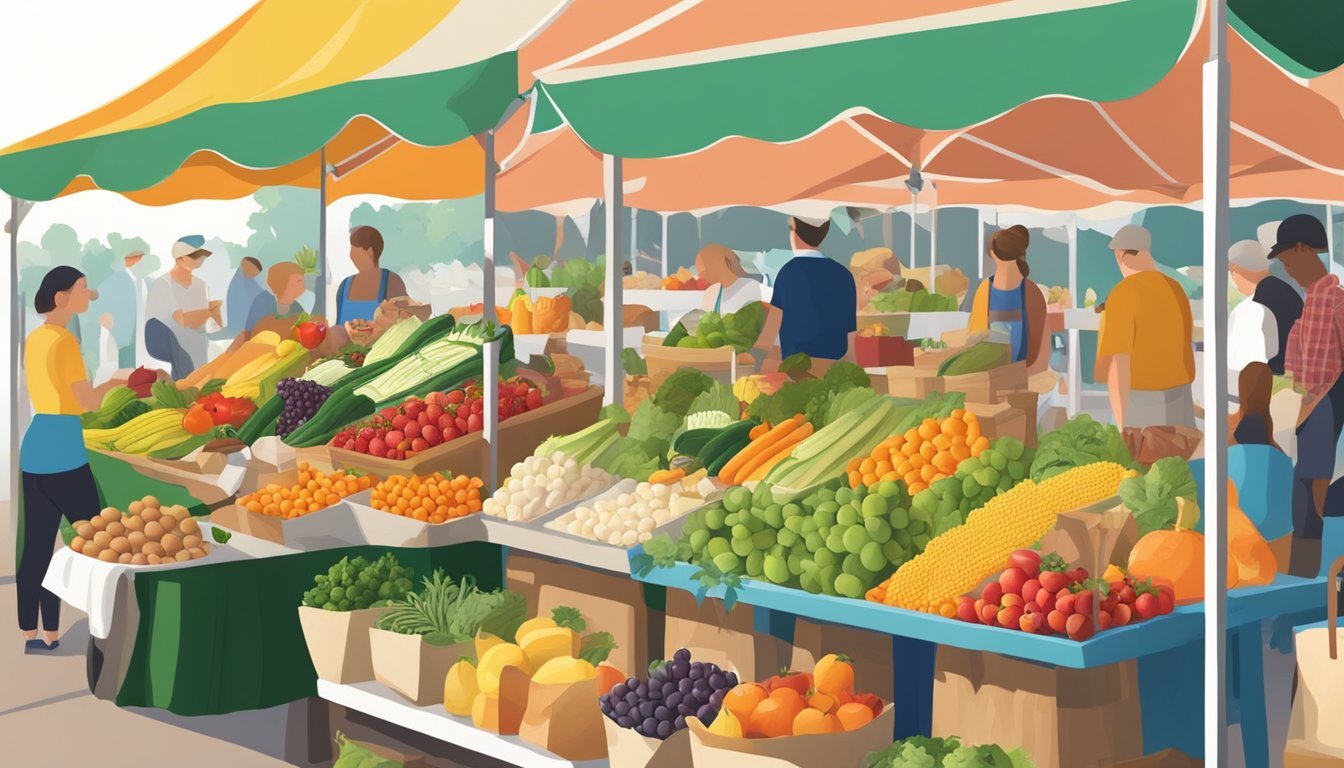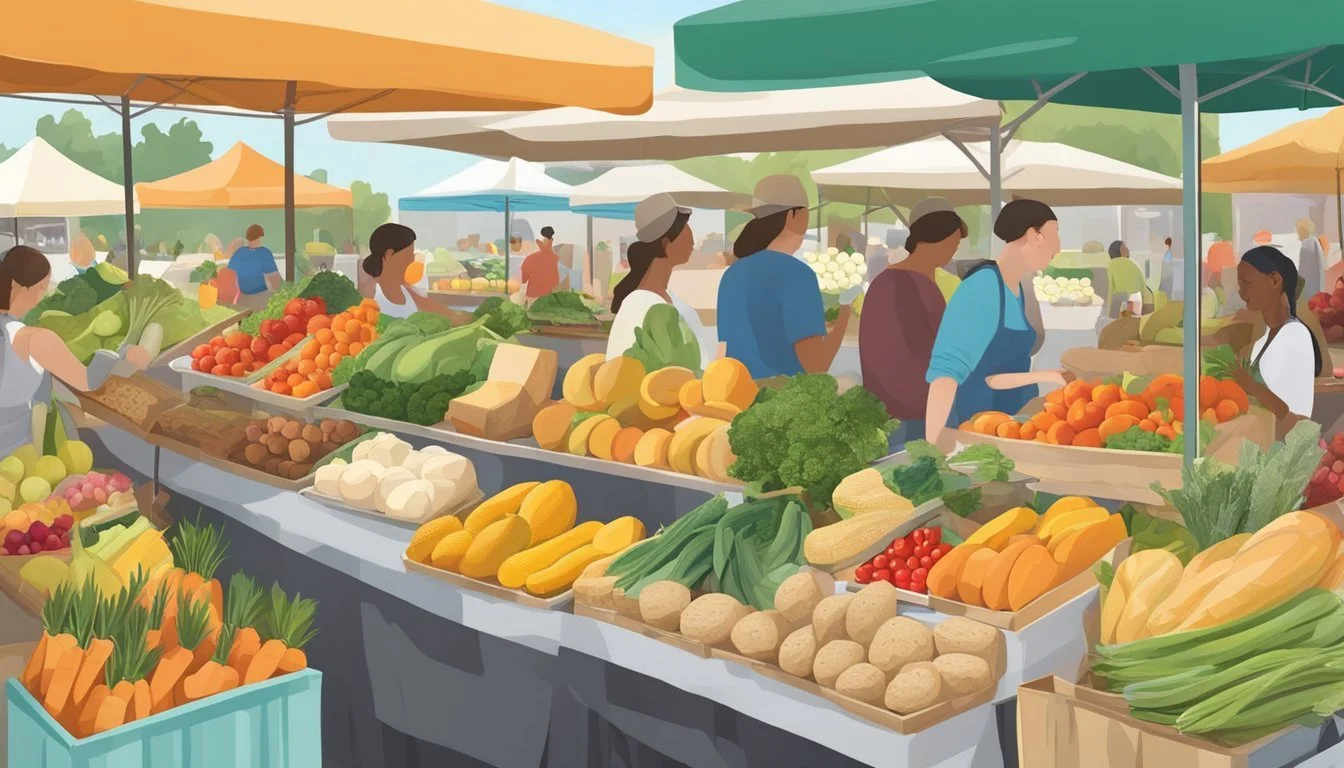The Best Farmers' Market Finds for Lactose-Free Diets
Your Guide to Dairy Alternatives
For individuals with lactose intolerance, navigating food choices at a farmers' market can seem daunting, yet it presents a unique opportunity to explore a variety of lactose-free alternatives. Lactose intolerance, resulting from the body's inability to digest lactose properly, affects many people worldwide. The condition necessitates a diet that excludes dairy products or contains lactose-free dairy options. Farmers' markets, known for their fresh and whole foods, are excellent venues for lactose-intolerant shoppers seeking natural, dairy-free diet options.
Farmers' markets offer an abundance of fresh produce, which is inherently lactose-free, including fruits, vegetables, nuts, and seeds. They also often feature vendors specializing in plant-based and lactose-free products, from creamy non-dairy milk alternatives made from almonds, soy, or oats to dairy-free cheeses crafted from nuts. These markets are an excellent resource for those looking to maintain a lactose-free lifestyle without compromising on variety or taste.
The proliferation of plant-based diets has encouraged many farmers' market vendors to provide dairy-free alternatives that cater to the lactose-intolerant community. Shoppers can find a range of innovative lactose-free offerings, such as coconut cream as a substitute for heavy cream, alongside traditional staples like legumes and whole grains. These products are not only suitable for those avoiding lactose but also for anyone seeking to add more plant-based variety to their diet.
Understanding Lactose Intolerance
Lactose intolerance occurs when individuals have difficulty digesting lactose, a sugar found in dairy products. This condition arises due to a deficiency of lactase, an enzyme produced by the small intestine that is necessary for lactose digestion.
The symptoms of lactose intolerance can include bloating, gas, diarrhea, and abdominal pain. Unlike a milk allergy, which is an immune response to proteins in milk such as casein and whey, lactose intolerance is a digestive issue and does not involve an allergic reaction.
For those with lactose intolerance, consuming dairy can be challenging, but it is important to ensure adequate intake of crucial nutrients typically found in milk, such as calcium and vitamin D. Alternative sources or supplements might be necessary to meet these nutritional needs.
Milk alternatives such as almond, soy, or rice milk are commonly fortified with these nutrients and can be suitable substitutes. Additionally, some dairy products, such as certain aged cheeses (What wine goes well with aged cheeses?) and yogurts, contain lower levels of lactose and may be better tolerated.
It's worth noting that lactase supplements may help some individuals to better digest lactose, allowing more flexibility in their diet choices.
Here are some key points about lactose intolerance:
It is caused by lactase deficiency.
Symptoms include bloating, gas, and abdominal pain.
It differs from a milk allergy, which is an immune response.
Nutrient intake for calcium and vitamin D is essential.
Fortified milk alternatives and supplements can provide these nutrients.
Lactose-Free Diet Basics
When adhering to a lactose-free diet, one must be vigilant in identifying lactose in various foods, understand how to navigate grocery shopping, and become proficient in reading labels to detect lactose content.
Identifying Lactose in Foods
Lactose is predominantly found in dairy products such as milk, cheese, yogurt, and butter. Individuals following a lactose-free diet must be aware that lactose can also be present in less obvious products like baked goods, salad dressings, and processed snacks. It's essential to recognize that some products labeled as non-dairy, such as lactose-free butter or cheese, might still contain milk-derived ingredients, so they should approach these with caution.
Lactose-Free Grocery Shopping Tips
For lactose-free grocery shopping, one should prioritize products labeled as lactose-free, vegan, or plant-based, as these are less likely to contain lactose. Here's a brief list to help:
Milk: Opt for plant-based alternatives like soy, almond, or oat milk.
Yogurt: Select lactose-free versions or those made from coconut, almond, or soy.
Cheese: Seek out vegan cheese alternatives which are typically lactose-free.
Butter: Choose plant-based butters or those specifically formulated to be lactose-free.
Additionally, shoppers can look for enzymes added to products, such as lactase, which can help break down lactose, making them suitable for a lactose-free diet.
Reading Labels for Lactose Content
Understanding food labels is crucial for those on a lactose-free diet. Important label elements include:
Ingredients List: Check for lactose or milk as listed ingredients.
Contains Statement: Look for mentions of milk or lactose here, indicating presence.
Nutrition Facts Table: Some labels highlight lactose content under carbohydrates.
Labels may also indicate if a product is suitable for individuals with a milk allergy, which implies it is typically free from lactose as well. However, lactose intolerance and milk allergies are different, and those with allergies should avoid all milk proteins, not just lactose.
Alternatives to Dairy Products
Dairy alternatives have evolved dramatically, offering a satisfying experience for those on a lactose-free diet. Farmers markets now provide an array of these options, from milk alternatives to cheese and butter substitutes, that are both nutritious and flavorful.
Lactose-Free Milks and Creamers
For individuals with lactose intolerance or those who choose to avoid dairy, a variety of lactose-free milks are available. These alternatives include:
Soy Milk: Rich in protein and fortified with vitamins and minerals.
Almond Milk: Low in calories and with a nutty flavor.
Oat Milk: Known for its creaminess and environmental sustainability.
Coconut Milk: Offers a tropical taste and is ideal for cooking.
Creamers have also been transformed with non-dairy variants that can enrich coffee or tea without any lactose content. These creamers typically derive from the same bases as lactose-free milks and maintain a similar consistency to their dairy counterparts.
Non-Dairy Cheese and Butter Alternatives
Cheese substitutes are now available in multiple forms, reminiscent of traditional cheeses:
Blocks
Slices
Shreds
These non-dairy cheeses are often made from nuts, like cashews, or from soy, providing a dairy-free way to enjoy the taste and texture one might expect from cheese.
Butter alternatives have also come a long way. They spread, melt, and can be used in baking to achieve similar results as dairy-based butter. Ingredients in non-dairy butter often include:
Cultured cashew butter bases
Coconut, soy, or olive oil blends
Seasonings for enhanced flavor
With these alternatives, those who follow a lactose-free diet do not have to forgo the richness that butter and cheese traditionally provide to various dishes.
Produce Picks for Lactose-Free Diets
Adhering to a lactose-free diet does not have to be limiting, especially when visiting a farmer's market. The abundance of fresh produce provides a variety of options that cater to this dietary need.
Fruits and Vegetables
They are inherently lactose-free and rich in nutrients, making them a staple for those on a lactose-free diet. Shoppers will find an array of fruits including berries, apples, and citrus fruits which can serve as refreshing snacks or ingredients for breakfast smoothies. Vegetables such as leafy greens, bell peppers, and cruciferous vegetables like broccoli and cauliflower offer versatility for meals at any time of the day.
Common fruits: Berries, Apples, Citrus fruits
Key vegetables: Leafy greens, Bell peppers, Broccoli, Cauliflower
Legumes and Whole Grains
Farmer's markets often go beyond just produce, offering sections for legumes and whole grains that are perfect for those avoiding lactose. Beans, lentils, and peas are protein-rich alternatives to dairy and can be used in a variety of dishes from salads to soups. Whole grains such as oats, quinoa, and rice are excellent sources of fiber and can be used to create satisfying meals that comply with a lactose-free diet.
Legumes: Beans (e.g., black, pinto, kidney), Lentils, Peas (e.g., chickpeas)
Whole grains: Oats, Quinoa, Rice
Incorporating these lactose-free options not only complies with dietary restrictions but also aligns with USDA guidelines for a balanced diet. Shoppers can also find sprouts, nuts, and seeds like chia, which are great for adding texture and nutritional value to meals.
Proteins Suitable for Lactose-Free Diets
For those on a lactose-free diet, finding protein sources at the farmers' market can be simple and varied. They can choose from a selection of meat, poultry, fish, and a variety of plant-based proteins, which are naturally lactose-free.
Meat and Poultry
Meat and poultry are excellent sources of lean protein for those avoiding lactose. Key options include:
Chicken: A versatile and widely available source of lean protein.
Turkey: Offers a lean protein alternative often sold as ground turkey or turkey breasts.
Beef: When opting for cuts like sirloin or tenderloin, individuals can enjoy a high-protein, lactose-free option.
When purchasing these products, individuals should look for organic or free-range options to ensure the highest quality.
Fish and Seafood
Fish and seafood are packed with protein and are naturally devoid of lactose. They also provide essential omega-3 fatty acids. Popular choices at farmers' markets include:
Salmon: High in protein and omega-3 fatty acids.
Trout: Another excellent source of protein, often available fresh from local fisheries.
Shrimp: A convenient, lean protein that is easy to cook and can be added to a variety of dishes.
To maintain freshness and flavor, it is often best to consume fish and seafood on the day of purchase.
Plant-Based Proteins
Plant-based proteins are a cornerstone for vegan and vegetarian lactose-free diets. These include:
Legumes: Such as beans, lentils, and peas, which are all high in protein and fiber. Nuts and Seeds: Options like almonds, chia seeds, and flaxseeds offer protein along with healthy fats. Soy Products: Tofu and tempeh are not only rich in protein but also versatile in cooking, making them a staple for those on vegan or vegetarian diets.
While these products are typically available at farmers' markets, consumers should ensure they are unprocessed and free from additives to maintain a lactose-free diet.
Navigating Dairy in Processed Foods
When following a lactose-free diet, it's important to recognize dairy components in processed foods and to identify snacks that align with dietary needs.
Understanding Hidden Dairy Sources
Many processed foods contain dairy derivatives that can be challenging to identify. These ingredients often hide under various names that may not clearly indicate their origin. For example:
Casein & Whey: Proteins derived from milk, often found in protein bars and breakfast cereals.
Curds: Soft, white substances formed when milk sours, can appear in items like flavored potato chips.
Milk Solids/Milk Powder/Powdered Milk: Dehydrated milk, commonly used in baked goods and sausage.
In addition to these, lactose, the sugar found in milk, is also present in many processed items. Reading labels carefully is critical, as lactose can be an ingredient in products ranging from soup mixes to salad dressings.
Lactose-Free Snacks
For those seeking lactose-free options, the farmers' market offers a variety of snacks free from dairy:
Baked Goods: Many vendors now offer muffins made with dairy-free alternatives.
Bread: Look for loaves labeled lactose-free; these often substitute dairy ingredients with plant-based milks or oils.
Snack Bar: Some markets have a dedicated section for lactose-free products, featuring items like dairy-free granola bars.
Understanding the ingredients in processed foods and choosing lactose-free snacks is vital for maintaining a dairy-free diet.
Specialty Lactose-Free Products
Farmers' markets are ideal destinations for individuals with lactose intolerance, offering a variety of specialty products that cater to a lactose-free diet without compromising on taste or quality.
Dairy-Free Desserts
Shoppers with lactose intolerance can indulge in dairy-free desserts that utilize substitutes like oats, cashews, and coconut to mimic the creamy textures sought after in traditional dairy-based treats. Stalls often offer:
Vegan Ice Cream: Made from almond or oat milk and enriched with natural sweeteners.
Non-Dairy Yogurts: Crafted from soy or nuts, these yogurts come in a range of flavors with the bonus of live probiotic cultures.
Candies and baked goods labeled as lactose-free ensure that shoppers with a sweet tooth or a dairy allergy can enjoy without the worry of bloating or diarrhea commonly caused by lactose.
Healthy Fat and Oil Replacements
Heart-healthy fats and oils are essential to a balanced diet and can be found in the form of:
Avocado: Nature's butter, rich in monounsaturated fats and often turned into spreads and dips.
Nut Butters: Creamy options made from almonds or cashews, which can be used in place of dairy butters.
Coconut Oil: A versatile plant-based fat ideal for cooking and baking as a substitute for heavy cream.
Herbs and spices also play a significant role in enhancing the flavor profiles of fat substitutes, making them attractive for those on a lactose-free diet.
Preparing Lactose-Free Meals
When committing to a lactose-free diet, one must understand the ingredients that are suitable and the methods to prepare meals which maintain nutritional value, particularly calcium and Vitamin D that are often associated with dairy products.
Lactose-Free Cooking Techniques
To successfully cook lactose-free meals, one should embrace alternative ingredients and cooking methods that exclude lactose. Milk alternatives such as almond, oat, soy, and coconut milk can replace traditional cow's milk in recipes. It's crucial that these alternatives are enriched with calcium and vitamin D to ensure nutritional adequacy.
When cooking, use raw fruits and vegetables abundantly, as they are naturally lactose-free. A simple technique is to steam vegetables to preserve their nutrients and flavor. For sources of protein, tofu is an excellent lactose-free option that can be grilled, fried, or used in stews. Nuts and seeds can be added to dishes for extra texture and nutrients.
Creating a Lactose-Free Meal Plan
Crafting a meal plan conducive to a lactose-free diet involves careful selection of produce and pantry staples from the grocery store. Start with a base of gluten-free grains such as quinoa and oats, which support diverse, balanced meals. Incorporate a variety of fruits and vegetables for a spectrum of vitamins and minerals.
For breakfast, options include gluten-free oatmeal with berries or a smoothie bowl made with almond milk. Lunch and dinner can feature a hearty grain bowl with greens and grilled tofu (What wine goes well with grilled tofu?) , drizzled with olive oil. Lactose-free cheeses and yogurts found in farmers' markets enrich meals with flavor and texture without discomfort for those who are lactose intolerant.
Include lactose-free milk or fortified milk alternatives daily to meet calcium needs, and if necessary, integrate supplements recommended by a healthcare provider to maintain adequate levels of calcium and vitamin D. Always check labels for "lactose-free" to ensure the product meets dietary requirements.
Enhancing Overall Nutrition
When adopting a lactose-free diet, maintaining a balance of essential vitamins and minerals is vital. The focus should be on whole foods that naturally offer these nutrients without the need for dairy.
Balancing Vitamins and Minerals
For those on lactose-free diets, calcium and vitamin D intake are crucial, as they are commonly known to be abundant in dairy products. Leafy greens such as kale and spinach, along with legumes and fortified plant milks like almond and coconut milk, are excellent non-dairy sources of calcium. For vitamin D, look for fortified alternatives or ensure adequate sun exposure.
Calcium:
Vegetables: Broccoli, leafy greens
Legumes: White beans, lentils
Fortified Foods: Almond milk, coconut milk
Vitamin D:
Fortified Foods: Plant milks, some breakfast cereals
Sunlight: 10-30 minutes of midday sun several times a week
Incorporating a variety of fruits, vegetables, whole grains, and nuts ensures a diverse intake of essential vitamins and minerals that may include vitamin E, zinc, and iron.
Incorporating Superfoods
Superfoods can enhance a lactose-free diet by providing a concentrated source of nutrients. Chia seeds and flaxseeds are rich in omega-3 fatty acids. Nuts like almonds and cashews offer heart-healthy fats and protein. Yeasts, including nutritional yeast, can be a dairy-free flavor enhancer packed with B vitamins.
Superfoods to Include:
Nuts/Seeds: Chia seeds, flaxseeds, cashews
Legumes: Chickpeas, peas
Sprouts: Broccoli sprouts, alfalfa sprouts
These foods can be added to salads, smoothies, or eaten as snacks throughout the day to boost nutrient intake efficiently.
Conclusion
For individuals with lactose intolerance, farmers' markets are a bountiful source for finding an array of lactose-free products. They can maintain a dairy-free diet without compromising on essential nutrients. Lactose-free milks and plant-based creamers offer great alternatives to traditional dairy that cater to both health and taste.
Purchasing these lactose-free finds supports local businesses and encourages the proliferation of more diverse food options. While managing a lactose-free diet can be more costly, strategic selections at farmers' markets make it more affordable. Consumers should look for options like lactose-free milk, which is not only cost-effective but also nutrient-rich.
Nutritional adequacy is a vital consideration for those on a dairy-free diet. Farmers' markets often provide fresh, nutrient-dense foods that are inherently lactose-free. For instance, leafy greens and nuts are great non-dairy sources of calcium and other vital minerals.
Farmers' markets are not just about food; they are also educational hubs. Customers can learn from vendors about the lactose content in foods and the benefits of lactose-free options. Transparent labeling helps those with lactose intolerance make informed decisions.
In summary, farmers' markets provide a plethora of lactose-free options that help maintain a balanced, nutrient-rich diet for those with lactose intolerance. They offer both affordability and variety, thus making a dairy-free diet both accessible and enjoyable.











